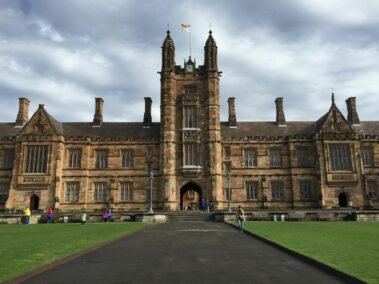The Power of Historical Air Quality Data in Shaping Environmental Policies
Understanding Long-Term Pollution Trends through Data Analysis
The analysis of historical air quality data is crucial for understanding long-term pollution trends and the effectiveness of regulatory measures. In regions like Saudi Arabia and the UAE, where rapid urbanization and industrialization are prominent, leveraging this data can significantly influence environmental policies and public health strategies. Cities such as Riyadh and Dubai have made substantial investments in monitoring air quality, providing a wealth of data that can be analyzed to inform future actions.
By examining historical air quality data, policymakers can identify patterns and trends in pollution levels over time. This analysis helps to pinpoint the primary sources of pollution and the periods when air quality is most compromised. For example, data from Riyadh might reveal increased pollution levels during specific seasons or correlate with industrial activities. Understanding these trends enables authorities to implement targeted measures to mitigate pollution and protect public health.
Moreover, analyzing historical air quality data allows for the evaluation of past regulatory measures. By comparing pollution levels before and after the implementation of specific regulations, it is possible to assess their effectiveness. This feedback loop is essential for refining policies and ensuring that they achieve the desired outcomes. In Dubai, where ambitious environmental targets are set, continuous assessment through data analysis is vital for maintaining progress towards cleaner air.
Leveraging Artificial Intelligence in Air Quality Data Analysis
The integration of Artificial Intelligence (AI) into the analysis of historical air quality data enhances the accuracy and efficiency of identifying pollution trends. AI algorithms can process vast amounts of data quickly, uncovering patterns and correlations that might be missed by human analysts. In Saudi Arabia, AI-driven platforms can analyze air quality data from multiple cities, providing comprehensive insights into regional pollution trends.
AI also enables predictive modeling, which can forecast future pollution levels based on historical data. These models can inform proactive measures to prevent air quality deterioration. For instance, in Riyadh, AI models might predict higher pollution levels during certain months, prompting preemptive actions such as stricter emissions controls or public advisories. This foresight helps to mitigate the impact of pollution on residents and the environment.
Furthermore, AI can support real-time monitoring and decision-making. By continuously analyzing incoming data, AI systems can detect anomalies or sudden spikes in pollution levels, triggering immediate responses from authorities. In Dubai, this capability ensures that air quality management is dynamic and responsive, enhancing the overall effectiveness of regulatory measures and protecting public health more efficiently.
The Role of Blockchain in Ensuring Data Integrity
The use of blockchain technology in managing and analyzing historical air quality data ensures the integrity and transparency of the information. Blockchain provides a decentralized ledger where data can be recorded securely and immutably. This feature is particularly important in environmental monitoring, where data accuracy is critical for informed decision-making.
In Dubai, blockchain can be used to record air quality data from various monitoring stations, ensuring that the data is tamper-proof and can be audited transparently. This transparency builds trust among stakeholders, including the public, businesses, and regulatory agencies. When all parties have confidence in the data, collaborative efforts to improve air quality are more effective and sustainable.
Blockchain also facilitates the secure sharing of air quality data across different jurisdictions and organizations. In Saudi Arabia, for example, data from multiple cities can be aggregated and analyzed collaboratively, providing a more comprehensive view of national pollution trends. This collaborative approach enables the development of unified strategies to tackle air pollution, ensuring that efforts are coordinated and impactful.
Leadership and Management in Air Quality Data Initiatives
Effective leadership and management are essential for the successful implementation of historical air quality data analysis initiatives. Business executives and mid-level managers in Saudi Arabia and the UAE must advocate for the adoption of advanced technologies and ensure their integration into existing environmental monitoring frameworks. Their vision and commitment to innovation drive progress in this field, making their regions more resilient to pollution.
Leaders must engage in strategic planning and allocate resources to support the deployment and maintenance of data analysis technologies. This involves training personnel to use AI and blockchain effectively and ensuring that all stakeholders understand their benefits and functionalities. In Riyadh and Dubai, where urban landscapes are continually evolving, strong leadership is essential to ensure that air quality management strategies keep pace with technological advancements.
Project management skills are equally important in the deployment of historical air quality data initiatives. Project managers oversee the logistics of integrating these technologies into air quality monitoring systems, from initial implementation to ongoing updates and maintenance. Their expertise ensures that the technology is always ready to be utilized, enhancing the overall effectiveness of air quality management efforts.
Future Prospects: Advancing Air Quality Management with Technology
The future of historical air quality data analysis looks promising, with continuous advancements in AI and blockchain driving the development of more sophisticated and reliable systems. Future technologies will offer even greater accuracy and efficiency, enabling more detailed and effective analysis of air quality trends. These advancements will be particularly beneficial for rapidly growing cities like Riyadh and Dubai, where maintaining air quality is a top priority.
In addition to improvements in existing technologies, new solutions are also being developed. These include AI-driven tools that provide real-time monitoring and analysis of air quality data, and blockchain-based platforms that enhance transparency and accountability in data management. By integrating these new technologies into air quality management frameworks, authorities can further enhance their ability to monitor and improve air quality effectively.
Moreover, the combination of historical air quality data analysis with other advanced innovations, such as the Internet of Things (IoT) and renewable energy solutions, will create a more robust and sustainable air quality management system. IoT devices can provide real-time data from various pollution sources, while renewable energy solutions reduce emissions and contribute to cleaner air. This integrated approach will enable more accurate and efficient air quality management efforts, ultimately enhancing the sustainability and safety of communities.
Conclusion: Embracing Historical Air Quality Data for a Cleaner Future
The integration of historical air quality data analysis is revolutionizing the field of environmental management. By leveraging advanced technologies such as AI, blockchain, and IoT, countries like Saudi Arabia and the UAE are enhancing their ability to monitor and improve air quality. These innovations ensure that data is accurate, transparent, and tamper-proof, enabling more effective and trustworthy air quality management efforts.
As we continue to advance in this field, the role of leadership and effective project management cannot be overstated. Business executives, mid-level managers, and project leaders must collaborate to ensure the successful implementation and maintenance of air quality data analysis initiatives. Their efforts will not only enhance public health but also demonstrate the transformative power of modern technology in environmental management.
In conclusion, the future of air quality management is bright, with historical data analysis at the forefront of this evolution. By prioritizing innovation and collaboration, we can create a cleaner and more resilient world, where communities are well-prepared to face the challenges posed by air pollution.
#HistoricalAirQualityData, #PollutionTrends, #RegulatoryMeasures, #ArtificialIntelligence, #DataAnalysis, #ModernTechnology, #BusinessSuccess, #LeadershipSkills, #ProjectManagement























